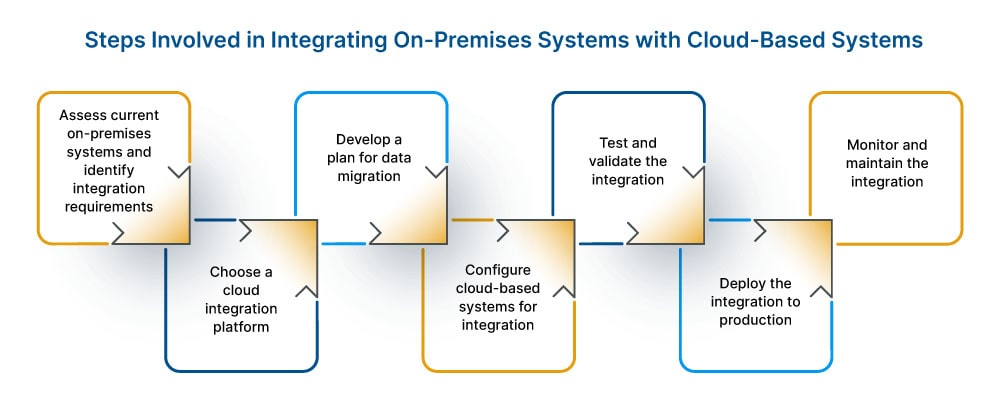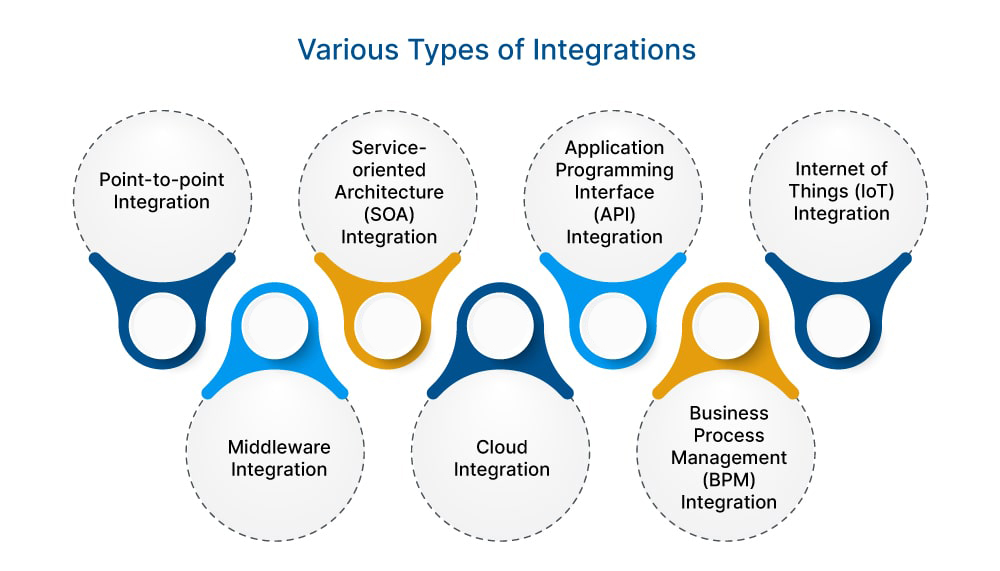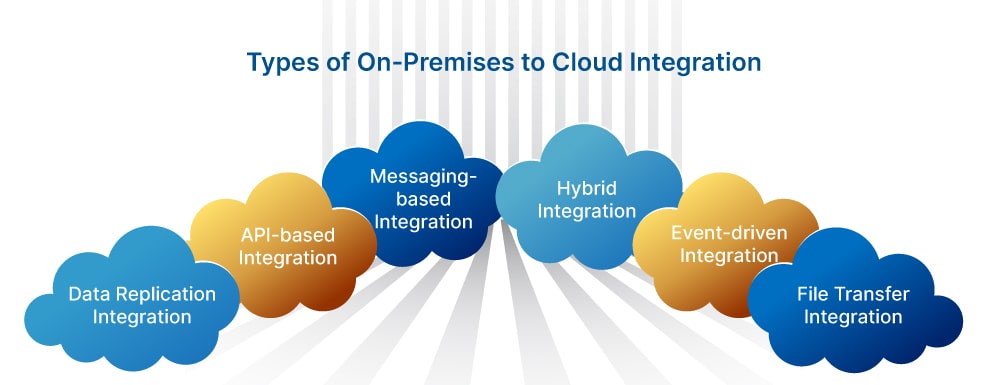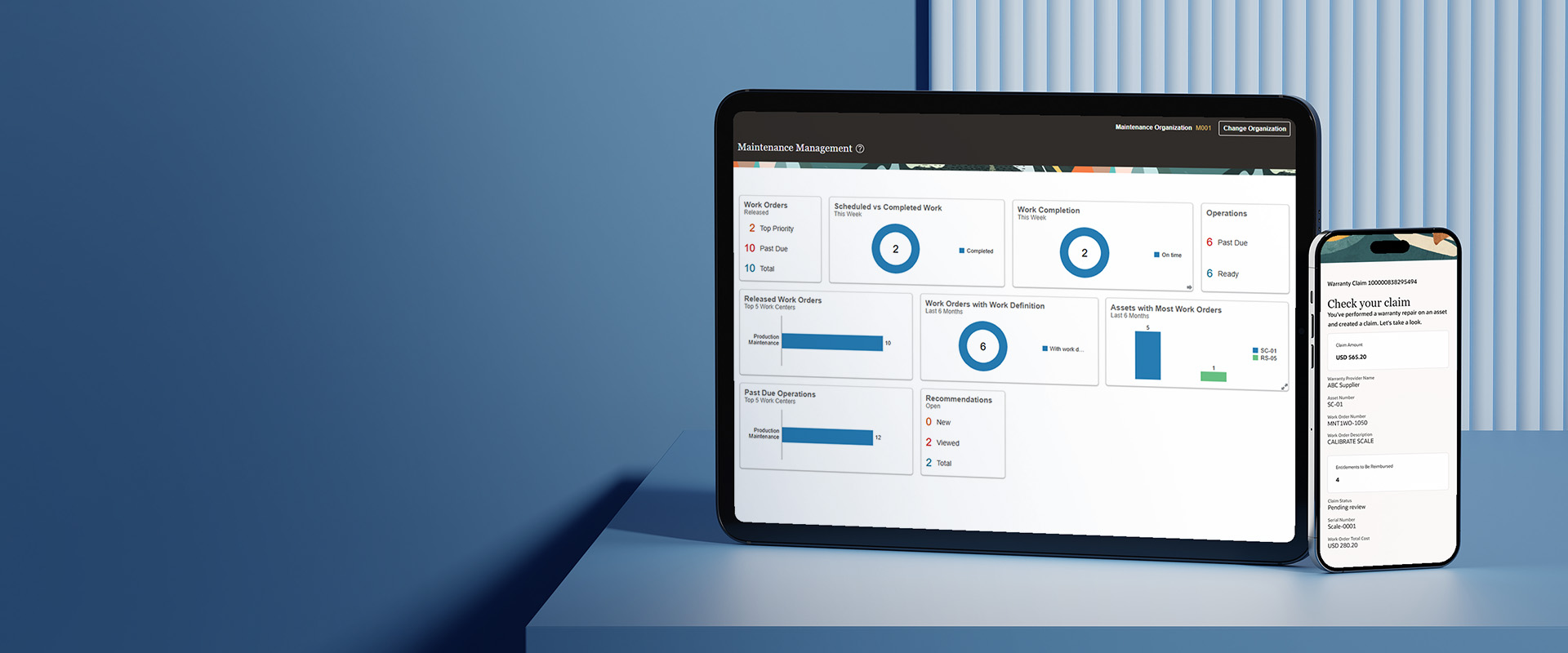Learn how to connect your on-premises systems with Oracle Cloud seamlessly using industry-proven best practices and essential considerations.
Cloud-based workloads account for 75% of workloads in 1 out of 5 organizations. About 39% of respondents already run at least half of their workload on the cloud. Another 58% said they planned to run that much workload in the cloud in the next 12-18 months. (Source: Fortinet 2021)
In today's fast-paced business environment, organizations constantly seek ways to modernize their IT infrastructure and improve their operations. One of the key strategies for achieving these goals is integrating on-premises systems with cloud-based systems like Oracle Cloud.
However, integrating Oracle Cloud with on-premises systems is a complex process that requires careful execution and planning. Organizations need to consider various factors, including security and compliance requirements, data governance, performance and scalability, integration complexity, resource requirements, testing and validation, and change management.
By following the best practices and considerations presented in this blog, organizations can successfully integrate their on-premises systems with Oracle Cloud, achieve their business goals, and gain a competitive advantage in their respective industries.
Why do Businesses Integrate their On-Premises Systems into Cloud?
Businesses integrate their on-premises systems with cloud-based systems for several reasons. Firstly, cloud integration allows businesses to modernize their IT infrastructure and leverage the benefits of cloud computing, such as scalability, flexibility, and cost-efficiency.
Cloud integration enables businesses to consolidate their IT systems, resulting in streamlined workflows and reduced IT maintenance costs. Thirdly, cloud integration allows businesses to access a wide range of cloud-based services and applications, such as analytics, artificial intelligence, and machine learning, which can help them to gain valuable insights and improve their business operations.
Finally, cloud integration allows businesses to improve their agility and responsiveness to changing business requirements by rapidly deploying new applications and services and scaling their IT resources up or down as needed. Integrating on-premises systems with cloud-based systems can help businesses optimize their IT infrastructure and reduce costs with the help of Oracle Cloud Infrastructure.

Key Challenges Businesses Face when Integrating On-Premises Systems with Cloud-Based Systems
While integrating on-premises systems with cloud-based systems can provide many benefits, there are also some challenges and considerations that organizations should be aware of. Here are some of the main integration challenges and considerations:
Data Security
When integrating on-premises systems with cloud-based systems, organizations should ensure that data is transmitted securely between the two environments. This may require additional security measures, such as encryption, firewalls, and access controls, to protect sensitive data.
Data Compatibility
On-premises and cloud-based systems may use different data formats, making integrate data between the two environments. Organizations may need to invest in data mapping and transformation tools to exchange data between the two systems seamlessly.
Network Connectivity
Integrating on-premises systems with cloud-based systems requires a reliable and high-speed network connection. Organizations may need to upgrade their network infrastructure to ensure data can be transmitted quickly and reliably between the two systems.
Application Integration
Integrating on-premises systems with cloud-based systems requires integration at the application level. This can be complex, as applications may use different integration methods and protocols. Organizations may need to invest in integration middleware or other integration tools to ensure that applications can communicate with each other effectively.
Performance
Integrating on-premises systems with cloud-based systems can impact performance, particularly if large volumes of data are being transferred between the two systems. Organizations must ensure that the integration process does not impact system performance or cause downtime for critical applications.
Monitoring and Maintenance
Integrating on-premises and cloud-based systems requires ongoing monitoring and maintenance to ensure the integration remains stable and secure. Organizations must allocate resources to monitor and maintain the integration over time.
Integrating on-premises systems with cloud-based systems can provide many benefits, but also requires careful consideration of data security, compatibility, network connectivity, application integration, performance, and monitoring and maintenance. Organizations can implement a successful integration strategy that meets their business needs by understanding these challenges and considerations.

Best Practices for Integrating Oracle Cloud with On-Premises Systems
Determine Your Integration Requirements
Before you start integrating Oracle Cloud with on-premises systems, it's important to identify your integration requirements. This includes understanding what data needs to be integrated, which systems need to be integrated, and what integration patterns will be used.
Use Integration Best Practices
It's important to follow integration best practices, such as using a standardized integration architecture, following security and data privacy best practices, and implementing monitoring and management practices to ensure the integration performs optimally.
Choose the Right Integration Tool
Choosing the right integration tool is important for successful integration. Oracle offers a range of integration tools, including Oracle Integration Cloud, Oracle SOA Suite, and Oracle API Gateway. Each tool has its strengths and capabilities, so choosing the right one for your specific integration needs is important.
Use Pre-Built Connectors and Adapters
Oracle provides pre-built connectors and adapters for various applications, systems, and data sources. These can help speed up the integration process and ensure compatibility between different systems.
Consider Hybrid Integration
If you have a mix of on-premises and cloud-based systems, hybrid integration can provide the best of both worlds. Oracle offers hybrid integration capabilities through Oracle Integration Cloud and Oracle SOA Suite.
Implement Data Governance
As part of the integration process, it's important to implement data governance practices to ensure data quality, security, and compliance. This includes establishing data ownership, implementing data validation and cleansing processes, and following data retention policies.
Test and Monitor the Integration
Testing and monitoring are critical components of successful integration. Test the integration thoroughly before deploying it to production and implement monitoring and management practices to ensure the integration performs optimally over time.

Considerations to Keep in Mind when Integrating Oracle Cloud with On-Premises Systems
Security and Compliance
Integrating on-premises systems with a cloud-based system like Oracle Cloud requires careful consideration of security and compliance requirements. Organizations must ensure that data is transmitted securely, access controls are in place, and compliance requirements are met.
Data Governance
Integrating data from multiple systems can present challenges for data governance. Organizations need to establish data ownership, define data quality standards, and implement data validation and cleansing processes to ensure data accuracy.
Performance and Scalability
Integrating on-premises systems with a cloud-based like Oracle Cloud can affect system performance and scalability. It's important to assess the impact of the integration on system performance and scalability and make adjustments as necessary.
Integration Complexity
Integrating on-premises systems with a cloud-based system like Oracle Cloud can be complex. Organizations must carefully plan the integration process and choose the right tool to ensure a smooth integration process.
Resource Requirements
Integrating on-premises systems with a cloud-based system like Oracle Cloud can require additional resources, such as bandwidth, storage, and processing power. Organizations need to ensure that they have the necessary resources in place to support the integration process.
Testing and Validation
Testing and validation are critical components of successful integration. Organizations must ensure that they have a comprehensive testing and validation process to ensure the integration is functioning as expected.
Change Management
Integrating on-premises systems with a cloud-based system like Oracle Cloud can require changes to existing processes and workflows. Organizations must carefully manage these changes to ensure they do not disrupt business operations.
Integrating Oracle Cloud with on-premises systems is a complex process that requires planning and execution. Organizations need to consider security and compliance requirements, data governance, performance and scalability, integration complexity, resource requirements, testing and validation, and change management when integrating on-premises systems with Oracle Cloud.
End Note
In conclusion, integrating Oracle Cloud with on-premises systems is critical for organizations looking to modernize their IT infrastructure and improve their business operations. By carefully navigating the integration process, organizations can successfully integrate their on-premises systems with Oracle Cloud, achieve their business goals, and gain a competitive advantage in their respective industries.
As a certified Oracle Cloud Implementation Partner, Jade specializes in accelerated and predictable implementation cycles, fueling up faster and definitive growth trajectories for organizations. Our long-standing alliance with Oracle cloud encompasses joint industry solutions and product development. Our clients cut across multiple industries, including Hitech, Software services, Retail/CPG, Life Sciences & Healthcare, Manufacturing, Media & Telecom, and Financial Services.
Click to know more about Jade’s Oracle Consulting Services.













